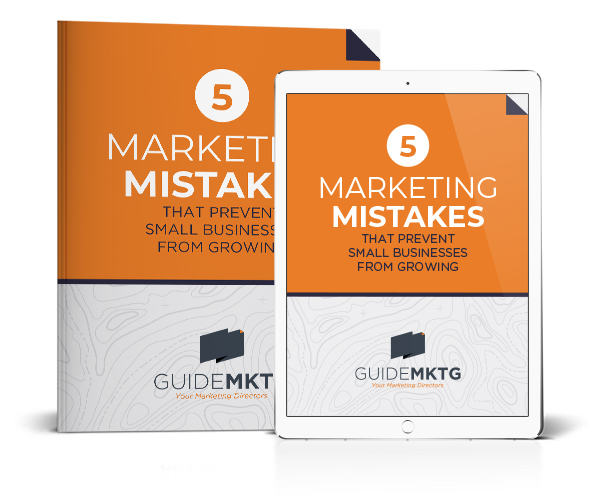You’ve heard it a million and one times: email marketing is an incredibly valuable tool for business owners. Yet, for some reason, your lead nurturing emails don’t seem to be getting the results everyone raves about. You regularly send out company newsletters but they aren’t bringing in more sales and, worse yet, you fear your emails are just annoying people. Lead nurturing emails don’t have to be hard. With this five-step process, you’ll be able to turn your company newsletters into valuable nurture emails that do convert leads and get results. Instead of feeling annoyed, your customers will look forward to seeing your name in their inbox.
Why aren’t company newsletters effective?
Company newsletters can be an effective way to stay in touch with your employees and stakeholders but they aren’t effective marketing tools.
Company newsletters focus on the company. Customers care about solving their problems. They don’t necessarily want to know about all your company is doing behind the scenes. They do want to know you can make their lives better and help them overcome their problems.
What are nurture emails?
Instead of talking about all that is new and exciting with your company, nurture email campaigns are focused on building trusting relationships with your potential and existing clients.
Everything you send to your customers should feel valuable to them. If you want existing and potential customers to read your emails, you have to send them relevant content that focuses on their pain points followed by helpful information that helps solve their problem.
5-Step Process for Writing Valuable Nurture Emails
By following these five steps every time you write lead nurturing emails, you will provide value, help your existing customers, and build trusting relationships with them.
Step 1: Know Your Audience Well
Before you can send valuable lead nurturing campaigns, you need to know what your target market wants and needs. That means you might need to do a little market research. You can get to know your ideal client when you:
-Join Facebook groups related to the problem your business solves or following social media accounts of people already working in your field. Read the comments and questions to learn what people are struggling with.
-Send a survey. If you already have an email list, send out a short survey to get to know your current customers.
Ask questions related to the problem you solve and allow people to answer your questions in their own words as much as possible so you can learn the exact language your ideal client uses to talk about their pain points.
-Search Google or Answer the Public to find common questions people ask related to the problem your business solves.
Jot all this information down on a list or document. The next time you need an idea for a good lead nurturing email, you can look at your research for inspiration.
Step 2: Have a Purpose
One of the biggest mistakes business owners make is sending an email to their list of customers just because they know they are supposed to, without an intention or goal for the email. You should always have a clear purpose in mind when writing email campaigns.
Donald Miller refers to this as your “controlling idea,” or the main point you want to get across. To write a valuable lead-nurturing email, choose one controlling idea per email. Everything you write should relate to that main goal.
Step 3: Offer Empathy
Now it is time to start writing your actual lead nurturing email. Begin by defining the specific problem your email is positioned to solve and then offer empathy to your target audience, showing that you truly understand their struggle.
You can show empathy by talking about a time when you faced a similar problem, briefly explaining why you care, or simply saying, “I/we get it”. You don’t need to fill your email with buckets of empathy, just a little sprinkle is enough.
When customers see that a company not only understands their problems but also cares about them, they begin to trust that company. Trust increases the likelihood that they will eventually buy your product or service because they know you have their best interest in mind.
Step 4: Provide Solutions
This is the step where you add in all the valuable content and truly help your customers.
However, that doesn’t mean you can skip the other three steps and just jump to this one. If you haven’t done your research, defined a goal for your communication, and offered empathy, you may end up sending emails that feel valuable to you but miss the mark for your customers.
Here are some simple ways you can provide solutions to your ideal client’s pain points in a nurturing email:
- Link to a blog post, video, or podcast with useful information
- Send helpful resources
- List helpful tips
- Share a lead magnet
- Create a how-to guide
- Provide testimonials or case studies showing how others achieved success
Step 5: Tell People What to Do Next
As you are closing out your email, clearly tell people what to do next. What one or two steps should they take to start putting the helpful information you’ve shared into action? Here are some examples of actions you could ask your customers to take:
- Visit our website.
- Read this blog post.
- Watch this video.
- Reply to this email.
- Schedule a call.
- Buy our product/service.
Although you can use nurture emails to drive sales, that shouldn’t be the main focus of your lead nurturing emails. Only 20% of your nurturing emails should focus on making a sale. The goal for the rest of your nurture sequence is to simply provide additional value and help your customers. Giving something of value while expecting nothing in return is what makes lead-nurturing emails effective for building relationships.
Bonus Tips for Writing Valuable Nurture Emails
Now that you’ve got a process for writing lead-nurturing emails, here are a few extra tips to make sure your emails get delivered, opened, and read.
Use plain text.
Most email management systems offer the ability to create fancy, branded templates. Although they look great, they also alert the email service providers that you are a business, likely looking to sell something.
Opt out of the fancy design and stick with plain text to help keep your emails out of the promotions folder.
Add a catchy subject line.
Good subject lines are vital to getting your emails opened. Review these nine tips to ensure you are writing the best subject lines possible.
Keep your email short.
A nurture email should be short, according to HubSpot only 50-125 words. Keep your emails clear, concise and focused on your controlling idea.
Hopefully, the idea of writing nurture emails just went from intimidating and confusing to super simple. Just follow the five-step process we’ve laid out and you’ll be well on your way to sending valuable nurture emails people look forward to reading. As long as your emails always provide your clients with useful information, you won’t be annoying anyone — you will be helping your clients solve their problem.
Don’t want to use your time writing emails? We’ve got you. Schedule a call and we’ll go over what it would take for us to write them for you.





